Juicy Salif,1984
Designed by Philippe Starck in 1989, this iconic lemon squeezer is obviously a functional design, but also a moving and mysterious sculptural work. A lemon squeezer’s job is to get the juice out, leaving behind the pits and rind.
Created at the request of the exemplary Italian product manufacturer, Alessi, its unifunctional design offers little or no advantage over traditional squeezers. What the Juicy Salif does offer is a unique appearance at a less-than-competitive price ($75). It reflects both architectural and entomological influences: The product’s shape has its roots in Middle Eastern mosques, while the weight of its furrowed body is evenly distributed among three spindly legs.
A design icon of the late 1980s, the Juicy Salif gives tangible form to the era’s passion for high-consumerism. The product smacks of the “bad form” tenets of postmodernism. But there are ergonomic problems, as well. The Juicy Salif’s cast-aluminum shape stands a majestic 12 inches high–a bit too tall on the average countertop to comfortably grip and compress a lemon. In addition, the grooves in the press are difficult to clean.
 Phillipe Starck is on of the best-known contemporary designers in the world. He has not only received public acclaim for his amazing building interior designs but has also proved to be an accomplished architect and product designer.
Phillipe Starck is on of the best-known contemporary designers in the world. He has not only received public acclaim for his amazing building interior designs but has also proved to be an accomplished architect and product designer.
Much of his work produced in the 1980’s and 1990’s were influenced by fashion and novelty. It has even been referred to by some as being ‘overdesigned’. In the 21st century his approach to design seems to have changed.
Starck has recently promoted the ethos that honesty and integrity should be at the core of design. Products should not created as ‘throw away artifacts’, only surviving for as long as they remain in fashion but should ideally have longevity and durability. He believes that as designers we need to be both honest and objective.
Philippe Starck was born in Paris on 18th January 1949 the son of an aircraft designer; it is he who probably inspired the young Starck. Even at a very early age Starck showed enthusiasm for design. Starck lives and works in Paris.
Products designed by Starck can be seen on display in the collections of a number of European and American museums, among them the Brooklyn Museum in New York, the Musée des Arts Décoratifs in Paris, and the Museum of Design in London. Exhibitions of his work, either alone or in conjunction with that of other designers, have been held, among other places, in Paris, Marseille, Rome, Munich, Düsseldorf, Kyoto, Tokyo, Chicago, Los Angeles, and New York.
Barbie fashion doll, 1959
 Barbie was unveiled at the New York Toy Fair in 1959 and took the world by storm. Over 351,000 dolls were sold in the first year alone and as the decades have passed, Barbie has remained an inspiration to millions of girls across the globe.
Barbie was unveiled at the New York Toy Fair in 1959 and took the world by storm. Over 351,000 dolls were sold in the first year alone and as the decades have passed, Barbie has remained an inspiration to millions of girls across the globe.
What began as a fashion doll has now evolved into a living brand that both mirrors and inspires cultural shifts and has celebrated girls and women over the years.
Barbie has had over 90 careers including astronaut, doctor and even presidential candidate and has represented over 75 nationalities. Over one billion Barbie dolls have now been sold with both adults and children collecting her in record numbers. Today she remains one of the hottest selling toys in the world.
American businessperson Ruth Handler (1916 – 2002) changed the face of the toy industry with her introduction of the Barbie doll in 1959. Co – founder of the Mattel toy company, Handler was also noted for her marketing innovations. She later went on to a successful second career in the prosthetic breast business. At the time of Handler’s death, there had been over a billion Barbies sold in 150 countries.
Coca-Cola Contour Bottle, 1915
“The Famous Coca-Cola bottle is more than just a packaging,” Stephen Bayley once said. “It’s a genuine modern icon: an image of faith for a global civilisation committed to pleasurable consumption, not just of delicious drinks, but of favourable imagery too”.
There are various myths over the inspiration for the design of the Coca Cola bottle – one including Marilyn Monroe.
However the truth behind the design hails back to 1915, when an unknown designer Alexander Samuelsson was briefed to design a new bottle. His design took inspiration from the curvature of the cocoa bean – which in turn produced the ergonomic silhouette we recognise today.
Alexander Samuelsson Invented on 8th May 1886 by Dr John Styth Pemberton, Coca-Cola was first sold at the soda fountain in Jacob’s Pharmacy, Atlanta. The fizzy drink first arrived in Great Britain in 1900 when Charles Candler, son of the owner of The Coca-Cola Company, brought a jug of syrup with him in a visit to London.Initially Coca-Cola was sold in straight bottles called Hutchinson bottles, which were identical to their competition – proving tricky for customers to differentiate between brands. So a forward-thinking manager set a brief to design “a bottle that a person will recognise as Coca-Cola even if he feels it in the dark.”Alexander Samuelsson was that designer. A Swedish innovator whose passion was with glass, Samuelsson took his inspiration from images of the cocoa bean in encyclopaedias Rubik’s Cube, 1974
There is only 1 correct answer and 43 quintillion wrong ones for Rubik’s Cube. God’s algorithm is the answer that solves the puzzle in the least number of moves. One eighth of the world’s population has laid hands on ‘The Cube’, the most popular puzzle in history and the colorful brainchild of Erno Rubik.
Rubik’s initial attraction to inventing the Cube was not in producing the best selling toy puzzle in history. The structural design problem interested Rubik; he asked, “How could the blocks move independently without falling apart?” In Rubik’s Cube, twenty-six individual little cubes or cubies make up the big Cube. Each layer of nine cubies can twist and the layers can overlap. Any three squares in a row, except diagonally, can join a new layer. Rubik’s initial attempt to use elastic bands failed, his solution was to have the blocks hold themselves together by their shape. Rubik hand carved and assembled the little cubies together. He marked each side of the big Cube with adhesive paper of a different color, and started twisting.
Born the 13.07.1944, Erno Rubik started his career as an architect progressing to Editor of a games and puzzle journal. After three years Erno turned his back on journalism and moved into self-employment when he founded the Rubik Studio where he designed furniture and games.But he also invented a multitude of other brain-teasers as the Rubik’s Clock, the Pocket Cube (Rubik’s cube 2x2x2) , …
Concorde
Like the mystique that surrounds it, the Concorde is a complex, intriguing, paradoxical machine. To witness its striking silhouette is to gaze back into the mists of time when Leonardo da Vinci folded parchment into gliders as he pondered the possibility of flight. The jetliner has been alternately described as “strangely beautiful,” “the last romantic airplane,” and “a fuel-guzzling white elephant.”
The aircraft that evokes such poetic and prickly descriptions was designed by Gordon Strang and Lucian Servanty in a collaboration between British Aerospace Corp. and Sud Aviation. The Concorde came into being in 1969, but when it debuted commercially seven years later it was, plainly put, a flop. Conceived in an era when oil was plentiful and cheap, it is a needle-nosed anachronism. Even today, despite the allure of its aerodynamic shape, majestic lift-off, and unmistakable cachet, the 203-foot-long Concorde gulps twice the amount of fuel of its counterparts, creates a shock wave that is heard on the ground as a sonic boom, and doesn’t fly a single mile beyond its exclusive transatlantic route.
Once, the Concorde stood for the future of aviation. Even today, no other jetliner has quite the same elan or the ability to carry 100 people so far, so fast. But with one-way tickets priced at roughly $3,500, and development costs for more efficient versions at $10 billion, designers everywhere are reshaping past views of conquest and profit toward a concern for economics and the environment.
Lucien Servanty (died october 7th 1973) was a French aeronautical engineer. A graduate from the Ecole des Arts et Métiers, he joined Breguet in 1937, then worked at the SNCASO, where he was involved in the redesign of late variants of the Bloch MB.150 line. During World War II, he designed the SO.6000 Triton, France’s first jet aircraft. But Lucien Servanty is probably best remembered today for being one of the main engineers behind Concorde.
HEINZ TOMATO KETCHUP, 1876
The classic Heinz ketchup bottle was first created as a mark of trust, when Heinz decided it was time to preserve his product in full view of his consumer. It’s understandable that in the 1870s, when the food processing industry was in its beginning stages, consumers were wary of products they couldn’t see. And with good cause; Manufacturers often tried to trick the public by using leaves, wood fibre, or turnip filler to pad out their products, concealing it in a bottles and jars made of dark green.
Considering himself an honest businessman, Heinz bottled his product in clear glass, putting his customers’ minds at ease, and putting his business clearly on the map. Heinz also insisted on using fresh vegetables, which made his condiment richer and tastier than its competitors.
Today, Heinz is the largest distributor of tomato ketchup in the world, manufacturing enough tomatoes each day to fill an Olympic-sized swimming pool.
Henry John Heinz was a German-American businessman who took his first step into the food industry when helping his mother with the vegetable patch behind the family home. At the tender age of eight, he was not only cultivating vegetables, he was cultivating the foundation for what would later become one of the most famous food icons in the world.
Heinz’s business fetched sales of $2,400 a year when he was just seventeen, a colossal amount for the times. Heinz’ first business collapsed, but he forged on, establishing F & J Heinz, with his brother and cousin. One of the first products was tomato ketchup.
In 1888, Henry bought out his brother and cousin and changed the company’s name to H J Heinz Company. By 1905 the company was incorporated and Henry served
LEGO, 1932
 The first LEGO bricks – Automatic Binding Bricks – were launched in 1949. The bricks were hollow and had slits in each end where you could attach windows and doors. In 1953 the name was changed to LEGO Mursten (the Danish word for ‘bricks’) and a long process to improve the LEGO brick and its features began.
The first LEGO bricks – Automatic Binding Bricks – were launched in 1949. The bricks were hollow and had slits in each end where you could attach windows and doors. In 1953 the name was changed to LEGO Mursten (the Danish word for ‘bricks’) and a long process to improve the LEGO brick and its features began.
LEGO’s fundamental belief in the unlimited possibilities of play, plus their desire to ensure anything can be built using LEGO elements, inspired the company to improve the ‘clutch power’ of their original brick.
Finally, in 1957, the solution was found: a brick with three tubes inside that had a perfect three-point connection. Godtfred Kirk Christiansen was well aware that this discovery might inspire others to find similar solutions. So he continued to search for alternative ways to achieve clutch power. This resulted in four different prototypes; including a brick with three crosses instead of tubes, which later was used in a LEGO product sold in Italy and Japan.
Ole Kirk Christiansen (1891-1958)
 With the lasting motto “Only the best is good enough,” Ole Kirk Christiansen (1891-1958) was a master carpenter in the village of Billund, Denmark. He transformed a Great Depression slump into the creation of wooden toys that he named “LEGO,” Danish for “play well” and Latin for “I put together.”About success, poet Henry Wadsworth Longfellow once said, “Heights by great men reached and kept were not obtained by sudden flight but, while their companions slept, they were toiling upward in the night.”To build his company, Christiansen toiled long and hard into the night. With a strong work ethic, he never skimped on quality. By 1949, the company had produced 200 different plastic and wooden toys. Lego toys were first sold in the U.S. in 1961.Voted “toy of the century” by Fortune magazine, the interlocking plastic continues to be a celebration of creative play and the imagination that Albert Einstein said was “more important than knowledge.” With Old Kirk’s grandson, Kjeld Kirk Kristiansen as CEO, the company continues to help children build imagination throughout the world. Lego today has sold over $1.5 billion in 130 countries.”Children are our role models,” Kristiansen said. “They embrace discovery and wonder. They are natural learners. These are precious qualities that should be nurtured and stimulated throughout our lives.”
With the lasting motto “Only the best is good enough,” Ole Kirk Christiansen (1891-1958) was a master carpenter in the village of Billund, Denmark. He transformed a Great Depression slump into the creation of wooden toys that he named “LEGO,” Danish for “play well” and Latin for “I put together.”About success, poet Henry Wadsworth Longfellow once said, “Heights by great men reached and kept were not obtained by sudden flight but, while their companions slept, they were toiling upward in the night.”To build his company, Christiansen toiled long and hard into the night. With a strong work ethic, he never skimped on quality. By 1949, the company had produced 200 different plastic and wooden toys. Lego toys were first sold in the U.S. in 1961.Voted “toy of the century” by Fortune magazine, the interlocking plastic continues to be a celebration of creative play and the imagination that Albert Einstein said was “more important than knowledge.” With Old Kirk’s grandson, Kjeld Kirk Kristiansen as CEO, the company continues to help children build imagination throughout the world. Lego today has sold over $1.5 billion in 130 countries.”Children are our role models,” Kristiansen said. “They embrace discovery and wonder. They are natural learners. These are precious qualities that should be nurtured and stimulated throughout our lives.”
Apple iPod, 2001
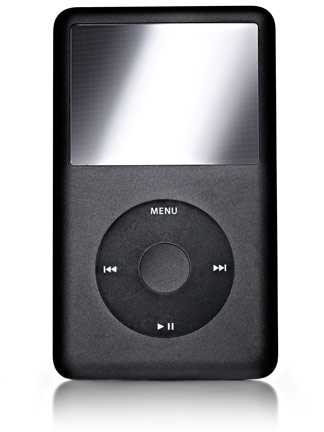 By the end of last year, over 119 million iPods had been sold since its inception in 2001 – and that number is sturdily ticking on. The fastest selling music player in history, it is the brainchild of Apple’s Senior Vice president of industrial design, Jonathan Ive.With millions of fans around the world using the player to download their favourite tracks, some high-profile users have credited it with single-handedly reviving the business of digital music storage. Mary J Blige famously gushed about her favourite music invention, saying: “iPod is more than just a music player; it’s an extension of your personality.”iPod is not frightened of mingling, working seamlessly with iTunes software and Apple’s online store. With its inventor now hitting Time Magazine’s list of the 100 most influential people in the world, it’s not likely that the iPod will fade from the limelight anytime soon.
By the end of last year, over 119 million iPods had been sold since its inception in 2001 – and that number is sturdily ticking on. The fastest selling music player in history, it is the brainchild of Apple’s Senior Vice president of industrial design, Jonathan Ive.With millions of fans around the world using the player to download their favourite tracks, some high-profile users have credited it with single-handedly reviving the business of digital music storage. Mary J Blige famously gushed about her favourite music invention, saying: “iPod is more than just a music player; it’s an extension of your personality.”iPod is not frightened of mingling, working seamlessly with iTunes software and Apple’s online store. With its inventor now hitting Time Magazine’s list of the 100 most influential people in the world, it’s not likely that the iPod will fade from the limelight anytime soon.
Jonathan Ive(1967- )
 He dazzles, delights, and above all – he designs. Jonathan Ive is the Senior Vice President of industrial design at Apple. He is also the inventor of the Apple iPod, the iMac, the iBook and the iPhone. Last year, Time Magazine put him amongst the 100 most influential people in the world, and according to sources, he’s one of the most modest, too.It is Ive’s obsessive passion for creativity, technology and problem solving that spawned inventions that changed the way the world felt about computers. According to Gadi Amit, founder of New Deal Design, “Apple’s big contribution is showing that you can become a billionaire by selling emotions, that design can be a valid business model.”Amit’s statement is proved beyond doubt by the iPod. For Ive, one of the world’s most influential innovations is simply a product of what he calls “fanatical care beyond the obvious stuff”.
He dazzles, delights, and above all – he designs. Jonathan Ive is the Senior Vice President of industrial design at Apple. He is also the inventor of the Apple iPod, the iMac, the iBook and the iPhone. Last year, Time Magazine put him amongst the 100 most influential people in the world, and according to sources, he’s one of the most modest, too.It is Ive’s obsessive passion for creativity, technology and problem solving that spawned inventions that changed the way the world felt about computers. According to Gadi Amit, founder of New Deal Design, “Apple’s big contribution is showing that you can become a billionaire by selling emotions, that design can be a valid business model.”Amit’s statement is proved beyond doubt by the iPod. For Ive, one of the world’s most influential innovations is simply a product of what he calls “fanatical care beyond the obvious stuff”.
Sony VAIO
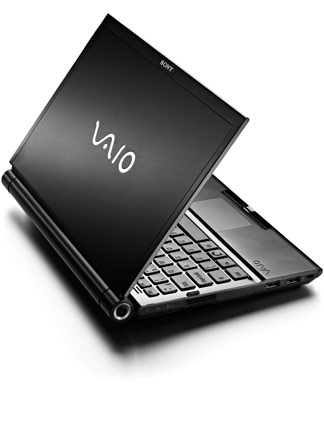 The Sony VAIO is a little slice of heaven served with elegance and distinction, and fulfills Sony’s vision to bring out the best through mechanical sophistication and chic styling in all details.Developed by mastermind designer Shinichi Ogasarawa, the VAIO was carefully constructed to the specifications of Sony’s simple philosophy: “ It has to be a joy to behold, but more importantly it has to be a pleasure to use.” The end product is user-friendly, from the design of the lid hinges right down to the magnesium alloy framework.With their star designers and techonolgy guru’s on board, Sony invested energy and expertise in creating the perfect look, feel, keyboard position, cooling system and battery life.According to Sony, the VAIO makes an effort to stand out, but never looks out of place, and is a unique and necessary addition to your office, living room and lifestyle.
The Sony VAIO is a little slice of heaven served with elegance and distinction, and fulfills Sony’s vision to bring out the best through mechanical sophistication and chic styling in all details.Developed by mastermind designer Shinichi Ogasarawa, the VAIO was carefully constructed to the specifications of Sony’s simple philosophy: “ It has to be a joy to behold, but more importantly it has to be a pleasure to use.” The end product is user-friendly, from the design of the lid hinges right down to the magnesium alloy framework.With their star designers and techonolgy guru’s on board, Sony invested energy and expertise in creating the perfect look, feel, keyboard position, cooling system and battery life.According to Sony, the VAIO makes an effort to stand out, but never looks out of place, and is a unique and necessary addition to your office, living room and lifestyle.
Shinichi Ogasawara
 Shinichi Ogasawara is a master player in his field, having scored his most recent hat-trick with the Sony VAIO, an innovative take on the modern laptop.Of his latest technological advancement, he says: “The increase of flexible working demands a truly versatile multimedia portable PC – but Sony wanted to infuse the VAIO with the latest technical specifications and features that complemented a more ergonomic lifestyle.”Ogasawara found these features in an unusual place: “We turned to the gentle aspect of a Japanese garden and translated it into the smooth curves and buttons of the keyboard to make for effortless typing – and a real sensory experience.”What emerged from Ogasawara’s vision was a laptop of near perfection and originality. “We wanted to keep it slim and strong, so we built it from super-tough carbon fibre and included a seven-and-a-half-hour battery life, wireless broadband connectivity and secure fingerprint-recognition system.”
Shinichi Ogasawara is a master player in his field, having scored his most recent hat-trick with the Sony VAIO, an innovative take on the modern laptop.Of his latest technological advancement, he says: “The increase of flexible working demands a truly versatile multimedia portable PC – but Sony wanted to infuse the VAIO with the latest technical specifications and features that complemented a more ergonomic lifestyle.”Ogasawara found these features in an unusual place: “We turned to the gentle aspect of a Japanese garden and translated it into the smooth curves and buttons of the keyboard to make for effortless typing – and a real sensory experience.”What emerged from Ogasawara’s vision was a laptop of near perfection and originality. “We wanted to keep it slim and strong, so we built it from super-tough carbon fibre and included a seven-and-a-half-hour battery life, wireless broadband connectivity and secure fingerprint-recognition system.”
Tetra Classic carton
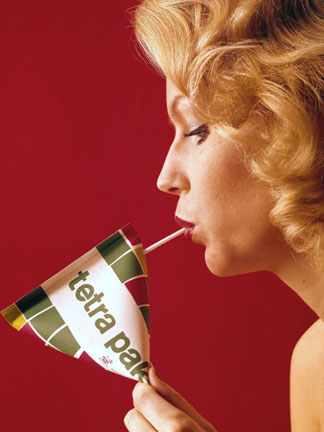 The heritage pack – the Tetra Classic carton– created by Swedish entrepreneur Dr Ruben Rausing was born out of a vision that “a package should save more than it costs”.Giving the carton its unique geometrical shape, Dr Rausing developed a packaging system that was formed, filled and sealed in a continual process. It resulted in packages completely filled, without air, and oxygen that have a damaging effect on milk and juice.This not only transformed the way we package our food, but the way we look at the world around us. This innovatively designed product went on to become the world’s leader in the sphere of packing liquid food and drink products and is already featured in the New York Museum of Modern Art.The carton package is made mainly from a natural, renewable resource: wood. As trees lock up carbon when they grow, this means that cartons have a lower carbon footprint. Tetra Pak are committed to ensuring their wood is sourced from responsibly managed forests to ensure that this holds true.Whilst continuing to protect the products they package, cartons are still evolving. They are not just a packaging system, but a canvas for great designs!
The heritage pack – the Tetra Classic carton– created by Swedish entrepreneur Dr Ruben Rausing was born out of a vision that “a package should save more than it costs”.Giving the carton its unique geometrical shape, Dr Rausing developed a packaging system that was formed, filled and sealed in a continual process. It resulted in packages completely filled, without air, and oxygen that have a damaging effect on milk and juice.This not only transformed the way we package our food, but the way we look at the world around us. This innovatively designed product went on to become the world’s leader in the sphere of packing liquid food and drink products and is already featured in the New York Museum of Modern Art.The carton package is made mainly from a natural, renewable resource: wood. As trees lock up carbon when they grow, this means that cartons have a lower carbon footprint. Tetra Pak are committed to ensuring their wood is sourced from responsibly managed forests to ensure that this holds true.Whilst continuing to protect the products they package, cartons are still evolving. They are not just a packaging system, but a canvas for great designs!
Dr Ruben Rausing (1895 – 1983)
 Dr. Ruben Rausing was born on June 17, 1895 in Raus, Sweden. After studying economics in Stockholm, he went to America in 1920 for graduate studies at New York’s Columbia University. There, he witnessed the growth of self-service grocery stores, which he believed would soon be coming to Europe, along with a heightened demand for packaged foods. In 1929, with Erik Åkerlund, he established the first Scandinavian packaging company.Development of a new milk container began in 1943. The goal was to provide optimal food safety while using a minimum amount of material. The new containers were formed from a tube that was filled with liquid; individual units were sealed off below the level of the beverage inside without introducing any air. Rausing reportedly got the idea from watching his wife Elizabeth stuffing sausages.
Dr. Ruben Rausing was born on June 17, 1895 in Raus, Sweden. After studying economics in Stockholm, he went to America in 1920 for graduate studies at New York’s Columbia University. There, he witnessed the growth of self-service grocery stores, which he believed would soon be coming to Europe, along with a heightened demand for packaged foods. In 1929, with Erik Åkerlund, he established the first Scandinavian packaging company.Development of a new milk container began in 1943. The goal was to provide optimal food safety while using a minimum amount of material. The new containers were formed from a tube that was filled with liquid; individual units were sealed off below the level of the beverage inside without introducing any air. Rausing reportedly got the idea from watching his wife Elizabeth stuffing sausages.
Victrinox Swiss Army knife
 The first Swiss Army Knife was designed in 1891, when Karl Elsener put together a knife that would supercede the product being distributed by German Manufacturers to the Swiss Army.With the aim of keeping the knife to a compact unit, Elsener added as many useful features as possible such as a cutting blade, a screwdriver, can opener and punch. To distinguish his knives from fakes and copies, Elsener decided to use the cross and shield on all pocket knives.Today, Victorinox produces 30,000 Swiss Army Knives per day in over 100 different models, and are part of the permanent collection of the Museum of Modern Art in New York and the State Museum of Applied Arts and Design in Munich.
The first Swiss Army Knife was designed in 1891, when Karl Elsener put together a knife that would supercede the product being distributed by German Manufacturers to the Swiss Army.With the aim of keeping the knife to a compact unit, Elsener added as many useful features as possible such as a cutting blade, a screwdriver, can opener and punch. To distinguish his knives from fakes and copies, Elsener decided to use the cross and shield on all pocket knives.Today, Victorinox produces 30,000 Swiss Army Knives per day in over 100 different models, and are part of the permanent collection of the Museum of Modern Art in New York and the State Museum of Applied Arts and Design in Munich.
Karl Elsner (1860 – 1918)
 Karl Elsener was a patriotic, innovative young cutler in the 1800’s, who introduced the Army Knife to Swiss forces. Elsener was outraged at the fact that German manufacturers supplied the Swiss Army with knives – an injustice in his eyes. Knowing that a workable solution was needed, Elsener set out with raw determination to find one.Producing a ‘soldier’s’ knife, Elsener added useful features such as a wooden handle, a cutting blade, screwdriver, can opener and punch, which all fitted into one single unit. He set up his own company to distribute his knives, naming it Victorinox – a combination of his mothers’ name and inox, a form of stainless steel used by the young innovator.During World War II, American GI’s named the invention “the survival knife”, a necessity they couldn’t do without on the battlefield. With such fervent endorsement from the country’s finest frontline forces, the original Swiss Army knife became an essential lifelong partner to the pocket of every schoolboy.
Karl Elsener was a patriotic, innovative young cutler in the 1800’s, who introduced the Army Knife to Swiss forces. Elsener was outraged at the fact that German manufacturers supplied the Swiss Army with knives – an injustice in his eyes. Knowing that a workable solution was needed, Elsener set out with raw determination to find one.Producing a ‘soldier’s’ knife, Elsener added useful features such as a wooden handle, a cutting blade, screwdriver, can opener and punch, which all fitted into one single unit. He set up his own company to distribute his knives, naming it Victorinox – a combination of his mothers’ name and inox, a form of stainless steel used by the young innovator.During World War II, American GI’s named the invention “the survival knife”, a necessity they couldn’t do without on the battlefield. With such fervent endorsement from the country’s finest frontline forces, the original Swiss Army knife became an essential lifelong partner to the pocket of every schoolboy.
RD-50 ‘Revival’ DAB Digital radio,
based on 1956 model R200
 Harry Roberts was only 21 when he brought a sample receiver to Harrods during the ‘30s. Portable radios at the time were so heavy they couldn’t be moved around, and he immediately saw the potential in being able to carry music and news around easily.It took him thirty years to develop the model which used the newly invented transistor – his first customer, appropriately enough, was Queen Elizabeth II, who was impressed with such good sound coming out of such a small box.The Revival came about after a buyer showed interest in an old advertisement showing the R200. Designer, Gerry Thorn, recreated the 1950s model and a small number went into production – but demand was overwhelming. Originally produced in red, the radio is now available in over 20 colours, and the DAB version is the world’s number one selling digital radio.Over the years, the Roberts Radio Company has produced portable radios covered with mink, ponyskin and even solid gold, along with a children’s model that was hand-painted with nursery-rhyme characters.
Harry Roberts was only 21 when he brought a sample receiver to Harrods during the ‘30s. Portable radios at the time were so heavy they couldn’t be moved around, and he immediately saw the potential in being able to carry music and news around easily.It took him thirty years to develop the model which used the newly invented transistor – his first customer, appropriately enough, was Queen Elizabeth II, who was impressed with such good sound coming out of such a small box.The Revival came about after a buyer showed interest in an old advertisement showing the R200. Designer, Gerry Thorn, recreated the 1950s model and a small number went into production – but demand was overwhelming. Originally produced in red, the radio is now available in over 20 colours, and the DAB version is the world’s number one selling digital radio.Over the years, the Roberts Radio Company has produced portable radios covered with mink, ponyskin and even solid gold, along with a children’s model that was hand-painted with nursery-rhyme characters.
Harry Roberts
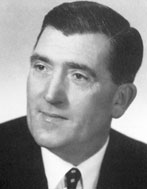 Born in 1910, Harry was the youngest of six children. After leaving boarding school at 14, Harry chose to work for the Rees Mace Manufacturing Company – one of the many small manufacturers producing wireless sets that had become more popular since broadcasting had begun, in November 1922. This is what would become the start of a lengthy and successful career leading to the prestigious, longstanding consumer electronics brands Roberts Radio.In 1932, Harry Roberts joined forces with Leslie Bidemead and the ‘Roberts Radio Company’ was born. By 1936 the company was promoting their portable receivers as ‘the finest of all’ and in 1955 the company was awarded the first of three Royal Warrants, as radio manufacturer to Her Majesty Queen Elizabeth II.Fast forward a few years and the Roberts Radio brand is still going strong capitalising on the retro revival, fuelled by a younger customer looking for traditional products yet incorporating the latest digital technology.
Born in 1910, Harry was the youngest of six children. After leaving boarding school at 14, Harry chose to work for the Rees Mace Manufacturing Company – one of the many small manufacturers producing wireless sets that had become more popular since broadcasting had begun, in November 1922. This is what would become the start of a lengthy and successful career leading to the prestigious, longstanding consumer electronics brands Roberts Radio.In 1932, Harry Roberts joined forces with Leslie Bidemead and the ‘Roberts Radio Company’ was born. By 1936 the company was promoting their portable receivers as ‘the finest of all’ and in 1955 the company was awarded the first of three Royal Warrants, as radio manufacturer to Her Majesty Queen Elizabeth II.Fast forward a few years and the Roberts Radio brand is still going strong capitalising on the retro revival, fuelled by a younger customer looking for traditional products yet incorporating the latest digital technology.
Baby Buggy for Maclaren, 1965
 Before Owen Maclaren’s ground-breaking 1965 design, prams were huge pieces of hardware that were difficult to manoeuvre and at odds with a new, informal era when women worked and few people had servants.The first Maclaren B-01 buggy was inspired by a visit from his daughter and her baby. Wheeling around a clumsy, bulky pushchair made Owen consider his background in designing aeroplane undercarriages – lightweight but load-bearing structures capable of folding neatly – and apply it to baby carriages.Using modern lightweight materials, Maclaren developed a structure that could comfortably carry a child and then fold into a space only a little bigger than a folded umbrella. The beauty of the new design was its light aluminium frame that weighed only six pounds and its 3-D folding mechanism that collapsed the buggy. He invented a new generation of baby transportation and revolutionised the industry.The book Century Makers lists the Maclaren buggy as one of the hundred clever things we take for granted which have changed our lives over the past century.
Before Owen Maclaren’s ground-breaking 1965 design, prams were huge pieces of hardware that were difficult to manoeuvre and at odds with a new, informal era when women worked and few people had servants.The first Maclaren B-01 buggy was inspired by a visit from his daughter and her baby. Wheeling around a clumsy, bulky pushchair made Owen consider his background in designing aeroplane undercarriages – lightweight but load-bearing structures capable of folding neatly – and apply it to baby carriages.Using modern lightweight materials, Maclaren developed a structure that could comfortably carry a child and then fold into a space only a little bigger than a folded umbrella. The beauty of the new design was its light aluminium frame that weighed only six pounds and its 3-D folding mechanism that collapsed the buggy. He invented a new generation of baby transportation and revolutionised the industry.The book Century Makers lists the Maclaren buggy as one of the hundred clever things we take for granted which have changed our lives over the past century.
Owen Maclaren (1907 – 1978)
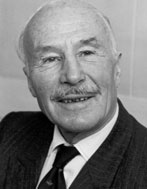 Owen Maclaren MBE was a former test pilot and the designer of the Supermarine Spitfire. Seeing his daughter struggle with his granddaughter’s pushchair, Maclaren was inspired to design a buggy that was easier-to-use and flexible. With his knowledge of lightweight, collapsible structures he designed his first buggy in 1965.Maclaren was commissioned in 1970 to design a larger buggy for children with disabilities by the Ministry of Health. It was designed on square tubes instead of the usual round tubes. Designs such as this have earned Owen Maclaren an MBE in 1978 from Queen Elizabeth II.
Owen Maclaren MBE was a former test pilot and the designer of the Supermarine Spitfire. Seeing his daughter struggle with his granddaughter’s pushchair, Maclaren was inspired to design a buggy that was easier-to-use and flexible. With his knowledge of lightweight, collapsible structures he designed his first buggy in 1965.Maclaren was commissioned in 1970 to design a larger buggy for children with disabilities by the Ministry of Health. It was designed on square tubes instead of the usual round tubes. Designs such as this have earned Owen Maclaren an MBE in 1978 from Queen Elizabeth II.
Dyson DC24 ball vacuum cleaner, 2008
 Dyson is all about making things better and Dyson’s DC24 cleaner certainly proved to do just that. This lightweight, bagless vacuum cleaner uses the Dyson’s innovative Ball technology.“I’ve always been intrigued by how things work,” says inventor James Dyson. “Inventing is just an extension of this curiosity. I’m inspired by frustration.”Dyson’s first frustration was a clogging bagged vacuum cleaner – and his answer was his ground-breaking cyclone technology. “It took 15 years – and a lot of mistakes – before the first Dyson machine rolled off the production line,” he says.James Dyson continuously looks to pioneer industry-leading designs to make everyday life that much simpler.And his latest frustration? “Wheels. All vacuum cleaners have fixed wheels that can only go in straight lines. However, a ball can turn on a sixpence… I think balls render wheels obsolete.”
Dyson is all about making things better and Dyson’s DC24 cleaner certainly proved to do just that. This lightweight, bagless vacuum cleaner uses the Dyson’s innovative Ball technology.“I’ve always been intrigued by how things work,” says inventor James Dyson. “Inventing is just an extension of this curiosity. I’m inspired by frustration.”Dyson’s first frustration was a clogging bagged vacuum cleaner – and his answer was his ground-breaking cyclone technology. “It took 15 years – and a lot of mistakes – before the first Dyson machine rolled off the production line,” he says.James Dyson continuously looks to pioneer industry-leading designs to make everyday life that much simpler.And his latest frustration? “Wheels. All vacuum cleaners have fixed wheels that can only go in straight lines. However, a ball can turn on a sixpence… I think balls render wheels obsolete.”
James Dyson (1947- )
 Dyson excelled in long distance running at school, but studied furniture and interior design at the Royal College of Art before moving into engineering. His art teacher wife supported him during the late 1970s as he developed his iconic cyclone vacuum cleaner, which didn’t lose suction as it sucked up dirt; it eventually launched as the G-Force in 1983.After failing to sell his invention to the major manufacturers, Dyson set up his own manufacturing company – with the Dyson Dual Cyclone as its masterpiece which soon became the fastest selling vacuum cleaner ever made in the UK.In October 2006 Dyson launched the Dyson Airblade, a hygienic hand dryer with a 400 mph air stream that dries hands completely in 10 seconds.
Dyson excelled in long distance running at school, but studied furniture and interior design at the Royal College of Art before moving into engineering. His art teacher wife supported him during the late 1970s as he developed his iconic cyclone vacuum cleaner, which didn’t lose suction as it sucked up dirt; it eventually launched as the G-Force in 1983.After failing to sell his invention to the major manufacturers, Dyson set up his own manufacturing company – with the Dyson Dual Cyclone as its masterpiece which soon became the fastest selling vacuum cleaner ever made in the UK.In October 2006 Dyson launched the Dyson Airblade, a hygienic hand dryer with a 400 mph air stream that dries hands completely in 10 seconds.
Cartier Tank watch, 1917
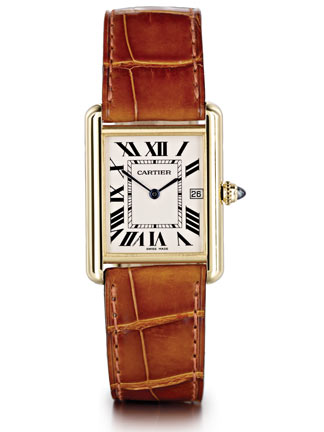 Louis Cartier must have been as stunned by the newly designed Allied tanks as enemy soldiers (who allegedly retreated from the battlefields in panic) were, so formidable their appearance.But Louis saw the impeccable lines and rugged bulk of the Renault tanks as exciting and new, and incorporated the elements into his new watch design – the first for a modern man of action.Designed in 1917, the Cartier Tank watch hit legendary status with its slim, refined look in a rectangular frame. Today, this watch’s iconic ranking remains as strong as it begun over 90 years ago.To date, the Tank watch is the best-selling watch in the history of Cartier.
Louis Cartier must have been as stunned by the newly designed Allied tanks as enemy soldiers (who allegedly retreated from the battlefields in panic) were, so formidable their appearance.But Louis saw the impeccable lines and rugged bulk of the Renault tanks as exciting and new, and incorporated the elements into his new watch design – the first for a modern man of action.Designed in 1917, the Cartier Tank watch hit legendary status with its slim, refined look in a rectangular frame. Today, this watch’s iconic ranking remains as strong as it begun over 90 years ago.To date, the Tank watch is the best-selling watch in the history of Cartier.
Louis Cartier (1875-1942)
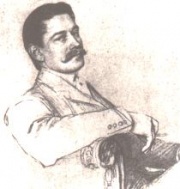 Louis Cartier (1875-1942) was a famous French watchmaker and businessman known worldwide for his elegant and extravagant designs in watches. A son of Alfred Cartier, he was passionate about mechanical pocket watches and had the goal of creating his own line of timepieces. Although Patek Phillipe created the first wristwatch in 1868, Louis Cartier is responsible for helping to popularize it over the traditional pocket watch. The most important steps in Cartier’s family business were made by several generations: Louis Francois Cartier, his son Alfred Cartier and three grandsons, Pierre, Jacque and Louis Francois.In 1904, his Brazilian friend Alberto Santos-Dumont, an early pioneer of aviation, asked Cartier to design a watch that could be useful during his flights. Since pocket watches were not suitable, Louis Cartier created the Santos wristwatch, which was also the first wristwatch made for men. Santos first went on sale in 1911. Thus, Cartier established his first production of wristwatches. In Rue de la Paix he designed timepieces with the help of Edmond Jaeger who agreed to supply Cartier’s watch line with movements.
Louis Cartier (1875-1942) was a famous French watchmaker and businessman known worldwide for his elegant and extravagant designs in watches. A son of Alfred Cartier, he was passionate about mechanical pocket watches and had the goal of creating his own line of timepieces. Although Patek Phillipe created the first wristwatch in 1868, Louis Cartier is responsible for helping to popularize it over the traditional pocket watch. The most important steps in Cartier’s family business were made by several generations: Louis Francois Cartier, his son Alfred Cartier and three grandsons, Pierre, Jacque and Louis Francois.In 1904, his Brazilian friend Alberto Santos-Dumont, an early pioneer of aviation, asked Cartier to design a watch that could be useful during his flights. Since pocket watches were not suitable, Louis Cartier created the Santos wristwatch, which was also the first wristwatch made for men. Santos first went on sale in 1911. Thus, Cartier established his first production of wristwatches. In Rue de la Paix he designed timepieces with the help of Edmond Jaeger who agreed to supply Cartier’s watch line with movements.
Chanel No. 5, 1921
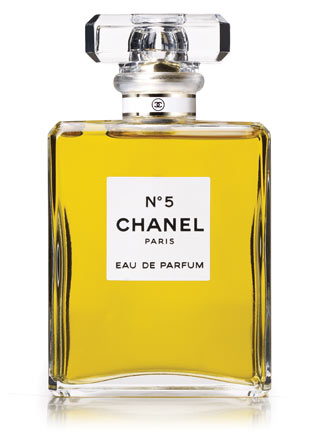 “I want to give women an artificial perfume,” Coco Chanel famously said. “Yes, artificial – like a dress, something that has been made. I don’t want any rose or lily of the valley: I want something that reflects my personality, something abstract and unique.” In an age of heavy mono-floral scents, it was revolutionary and changed the course of the fragrance industry.Russian perfumer Ernest Beaux created five vials of fragrance for Coco; Chanel preferred the fifth scent and bestowed it with the name No. 5. She then set about designing a bottle that would also encapsulate her philosophy. At the time, ornate fragrance bottles were the norm, so Chanel chose a square bottle reminiscent of a men’s cologne. The stark black-and-white label and the mysterious name perfectly demonstrated Chanel’s less-is-more attitude.Thirty years after its creation, sales of the fragrance rocketed when Marilyn Monroe told a journalist who inquired about her night-time attire that all she wore to bed was “a few drops of Chanel No. 5” – and Andy Warhol elevated the bottle to iconic status in a series of screenprints.In 1959, a bottle of Chanel No 5 appeared in the permanent collections of the Museum of Modern Art in New York.
“I want to give women an artificial perfume,” Coco Chanel famously said. “Yes, artificial – like a dress, something that has been made. I don’t want any rose or lily of the valley: I want something that reflects my personality, something abstract and unique.” In an age of heavy mono-floral scents, it was revolutionary and changed the course of the fragrance industry.Russian perfumer Ernest Beaux created five vials of fragrance for Coco; Chanel preferred the fifth scent and bestowed it with the name No. 5. She then set about designing a bottle that would also encapsulate her philosophy. At the time, ornate fragrance bottles were the norm, so Chanel chose a square bottle reminiscent of a men’s cologne. The stark black-and-white label and the mysterious name perfectly demonstrated Chanel’s less-is-more attitude.Thirty years after its creation, sales of the fragrance rocketed when Marilyn Monroe told a journalist who inquired about her night-time attire that all she wore to bed was “a few drops of Chanel No. 5” – and Andy Warhol elevated the bottle to iconic status in a series of screenprints.In 1959, a bottle of Chanel No 5 appeared in the permanent collections of the Museum of Modern Art in New York.
Gabrielle ‘Coco’ Chanel (1883–1971)
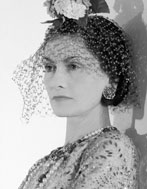 Fashion designer Coco Chanel introduced black as the most fashionable colour, devised the first synthetic fragrance and introduced a chic casual style borrowed from men’s attire that was effortlessly simple. She effectively influenced the course of female fashion throughout the 20th century.She took the name Coco while singing in cabarets in 1905, and set up a millinery shop in 1910; within a decade Chanel had set up her own fashion business. Her many accomplishments were overshadowed by an affair with a Nazi officer during the war, but her comeback in 1954 saw her reputation restored and her designs, which changed little from year to year, were once again some of the most popular in the fashion industry.
Fashion designer Coco Chanel introduced black as the most fashionable colour, devised the first synthetic fragrance and introduced a chic casual style borrowed from men’s attire that was effortlessly simple. She effectively influenced the course of female fashion throughout the 20th century.She took the name Coco while singing in cabarets in 1905, and set up a millinery shop in 1910; within a decade Chanel had set up her own fashion business. Her many accomplishments were overshadowed by an affair with a Nazi officer during the war, but her comeback in 1954 saw her reputation restored and her designs, which changed little from year to year, were once again some of the most popular in the fashion industry.
Mathmos lava lamp, 1963
 The creator of the pop-classic Astro ‘lava’ lamp – Edward Craven-Walker – was inspired to create the pop classic Astro lamp after seeing the germ of the idea that became the ‘lava-lamp’ in a pub in the New Forest. It was an egg timer designed by a Mr Dunnet in which a blob of liquid rose when the egg was ready. Craven-Walker then spent years developing a formula for a lamp based on this principal.The designer believed the lamp represented the cycle of life – it grows, breaks up, falls down and then starts all over again. It is accessible, throw away, populist, shows no respect for the past but a great optimism about the future. And whether you love it or hate it, its design is integral to the ethos of the 1960s and 1970s culture.
The creator of the pop-classic Astro ‘lava’ lamp – Edward Craven-Walker – was inspired to create the pop classic Astro lamp after seeing the germ of the idea that became the ‘lava-lamp’ in a pub in the New Forest. It was an egg timer designed by a Mr Dunnet in which a blob of liquid rose when the egg was ready. Craven-Walker then spent years developing a formula for a lamp based on this principal.The designer believed the lamp represented the cycle of life – it grows, breaks up, falls down and then starts all over again. It is accessible, throw away, populist, shows no respect for the past but a great optimism about the future. And whether you love it or hate it, its design is integral to the ethos of the 1960s and 1970s culture.
Edward Craven-Walker (1918-2000)
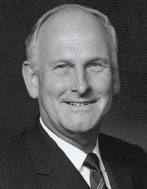 “The creator of the Astro ‘lava lamp’ – Edward Craven-Walker – was inspired to create this pop-design classic after seeing an egg-timer in a pub in the early 1960s, and named it to honour the recent moon landings. He spent years in a home-made laboratory in his garden shed, perfecting the lamp that we recognise today.The Astro – now so well known all over the world – is still made in Edward’s original factory in the UK. He believed the design represented the cycle of life – the ‘lava’ grows, breaks up, falls down and then starts all over again.Whether you love it or hate it, the Astro ‘lava-lamp’ has become an icon of sixties design culture – accessible, populist, it shows no respect for the past but a great optimism about the future.”
“The creator of the Astro ‘lava lamp’ – Edward Craven-Walker – was inspired to create this pop-design classic after seeing an egg-timer in a pub in the early 1960s, and named it to honour the recent moon landings. He spent years in a home-made laboratory in his garden shed, perfecting the lamp that we recognise today.The Astro – now so well known all over the world – is still made in Edward’s original factory in the UK. He believed the design represented the cycle of life – the ‘lava’ grows, breaks up, falls down and then starts all over again.Whether you love it or hate it, the Astro ‘lava-lamp’ has become an icon of sixties design culture – accessible, populist, it shows no respect for the past but a great optimism about the future.”
Etch a Sketch, 1959
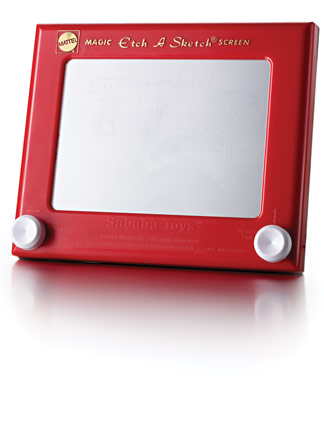 Frenchman André Cassagnes conceived his Ecran Magique (‘magic screen’) while working in an industrial factory during the 1950s, and displayed the rudimentary picture sketcher at the International Toy Exhibition in Germany in 1959. Here it caught the eye of Ohio Art principals H.W. Winzeler and WC Killgallon who instantly realised its potential for a generation of children raised on television: the devise was television-shaped with two prominent dials, but the big difference with it was that children held the controls.In 1960, Ohio Art launched the toy – renamed it Etch a Sketch – and sent out a television campaign ensuring its overnight success.The Etch a Sketch Club includes over 35,000 members, aged 2 to 82, some of them professional artists in their own right.
Frenchman André Cassagnes conceived his Ecran Magique (‘magic screen’) while working in an industrial factory during the 1950s, and displayed the rudimentary picture sketcher at the International Toy Exhibition in Germany in 1959. Here it caught the eye of Ohio Art principals H.W. Winzeler and WC Killgallon who instantly realised its potential for a generation of children raised on television: the devise was television-shaped with two prominent dials, but the big difference with it was that children held the controls.In 1960, Ohio Art launched the toy – renamed it Etch a Sketch – and sent out a television campaign ensuring its overnight success.The Etch a Sketch Club includes over 35,000 members, aged 2 to 82, some of them professional artists in their own right.
André Cassagnes
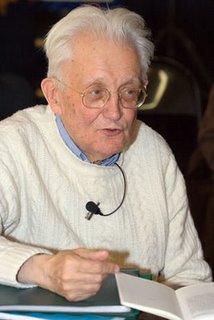 Set on creating a drawing toy that negated the use of pens and paper, French electrician André Cassagnes developed a square box that used static electricity and plastic beads in a box filled with aluminium powder that could be shaken to release the powder from the screen.With this invention in place and the name ‘Ecran Magique’ attached, André Cassagnes headed for The International Toy Exhibition in 1959, where he was soon picked out of the crowd and recognised for his outstanding contribution to children’s toy
Set on creating a drawing toy that negated the use of pens and paper, French electrician André Cassagnes developed a square box that used static electricity and plastic beads in a box filled with aluminium powder that could be shaken to release the powder from the screen.With this invention in place and the name ‘Ecran Magique’ attached, André Cassagnes headed for The International Toy Exhibition in 1959, where he was soon picked out of the crowd and recognised for his outstanding contribution to children’s toy
Montblanc pens, 1910
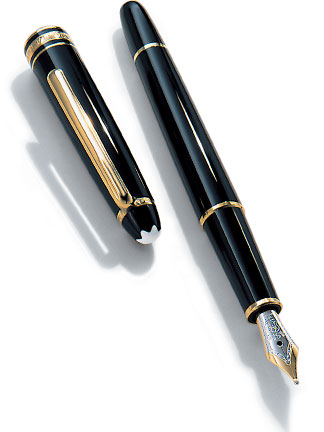 Each gold nib of the Miesterstück fountain pen is forged, welded, ground, rounded, polished and inlayed in platinum in a 100-step process – just as it was in 1924.That said, the pen has been modified internally to adapt to modern-day life, for instance, constructing it so that it can be carried on a plane without the pressure causing a flood of ink.It’s interesting that we hear all the time that computers would kill off the pen, just as 20 years ago people said that the VCR would kill off movie theatres. However to this day, 10 million people write with the Meisterstück every day.With the three gold rings, black casing and the famous white star, emblematic of its namesake’s snowy peak and code for ‘best take me seriously’.The Montblanc Meisterstück is part of the permanent design collection at the Museum of Modern Art in New York.
Each gold nib of the Miesterstück fountain pen is forged, welded, ground, rounded, polished and inlayed in platinum in a 100-step process – just as it was in 1924.That said, the pen has been modified internally to adapt to modern-day life, for instance, constructing it so that it can be carried on a plane without the pressure causing a flood of ink.It’s interesting that we hear all the time that computers would kill off the pen, just as 20 years ago people said that the VCR would kill off movie theatres. However to this day, 10 million people write with the Meisterstück every day.With the three gold rings, black casing and the famous white star, emblematic of its namesake’s snowy peak and code for ‘best take me seriously’.The Montblanc Meisterstück is part of the permanent design collection at the Museum of Modern Art in New York.
Jean-Marc Pontroue
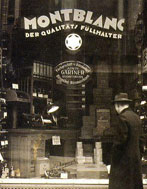 Mont Blanc has a colourful history, and its multiple successes can be credited to its multiple founders. Mont Blanc was first conceived under the name ‘The Simplo Filler Pen Company’ by the stationer Claus-Johannes Voss, the banker Alfred Nehemias and the engineer August Eberstein in 1906.Producing up-market pens in the Schanzen district of Hamburg, their first model was the Rouge Et Noir. But it was the bold pen design of 1910 that was to give the company its new name, the Mont Blanc. The first pen known as the Meisterstück or Masterpiece was produced in 1925.The simply designed pens with unusual durability and lasting style gathered their name from a suitably unusual event. During a card game, while on the topic of the new design, someone suggested: “Why not call it Mont Blanc? After all, it’s black at the bottom, white at the top and the greatest among its peers.” Owing to its quality-driven inventors, Mont Blanc pens are now renowned the world over and the design is so legendary, an example is displayed at New York’s Museum of Modern Art.
Mont Blanc has a colourful history, and its multiple successes can be credited to its multiple founders. Mont Blanc was first conceived under the name ‘The Simplo Filler Pen Company’ by the stationer Claus-Johannes Voss, the banker Alfred Nehemias and the engineer August Eberstein in 1906.Producing up-market pens in the Schanzen district of Hamburg, their first model was the Rouge Et Noir. But it was the bold pen design of 1910 that was to give the company its new name, the Mont Blanc. The first pen known as the Meisterstück or Masterpiece was produced in 1925.The simply designed pens with unusual durability and lasting style gathered their name from a suitably unusual event. During a card game, while on the topic of the new design, someone suggested: “Why not call it Mont Blanc? After all, it’s black at the bottom, white at the top and the greatest among its peers.” Owing to its quality-driven inventors, Mont Blanc pens are now renowned the world over and the design is so legendary, an example is displayed at New York’s Museum of Modern Art.



Leave a comment